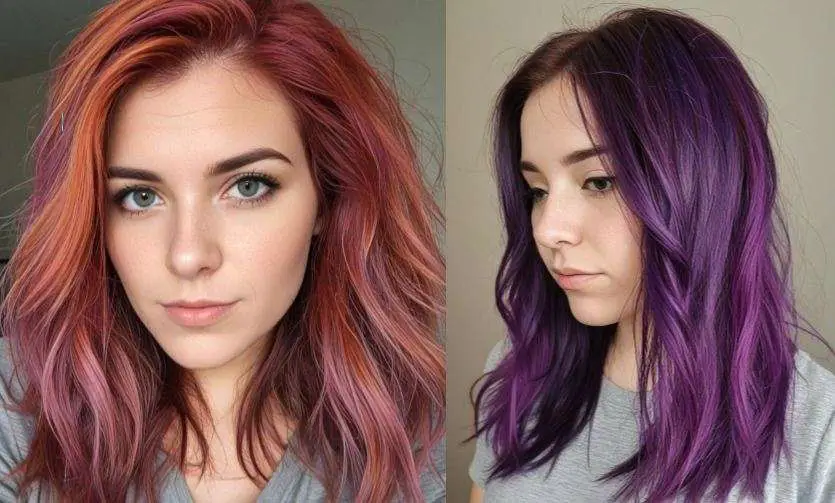Table of Contents
Color Oops is formulated to eliminate artificial hair color by shrinking the dye molecules, facilitating their removal from the hair. However, several factors could explain why Color Oops did not achieve the desired results:
Hair Porosity: The effectiveness of Color Oops can be affected by hair porosity. If your hair is highly porous, it may have absorbed the dye molecules deeply, which makes it more challenging for Color Oops to completely remove them.
Type of Hair Dye: Color Oops works best on oxidative hair dyes, which are permanent and chemically react to penetrate the hair shaft. If you used a different type of dye, such as temporary or semi-permanent color, Color Oops may not work as effectively.
Number of Applications: Removing multiple layers of hair dye or very dark colors may require more than one application of Color Oops to achieve the desired outcome. Persistent color buildup necessitates repeated use to fully restore the hair to its natural shade.


Incorrect Application: Proper application is crucial for Color Oops to work effectively. Insufficient product usage, inadequate duration of application, or incomplete rinsing can all hinder its performance.
Hair Damage: If your hair is already damaged or compromised from previous treatments, using Color Oops may further weaken it, making it less responsive to the product’s removal action.
Residual Dye: Previous use of various hair colors can lead to residual dye buildup, which Color Oops may not fully eliminate in a single application.
If Color Oops did not produce the expected results, consider consulting with a professional hairstylist or colorist who can assess your hair’s condition and recommend the most suitable approach to correct the color issue.
Let’s explore some potential reasons why Color Oops may not have effectively removed your hair color:


Hair Porosity:
Hair porosity refers to how easily your hair absorbs and retains moisture and chemicals. Highly porous hair, often due to damage or treatments, absorbs dye deeply into the hair shaft. This increased absorption can make it more difficult for Color Oops to fully remove all the dye molecules. Factors contributing to increased hair porosity include chemical treatments, heat styling, and environmental damage.
Type of Hair Dye:
As mentioned, Color Oops works best on permanent, oxidative hair dyes. Semi-permanent, demi-permanent, and temporary hair colors may not respond as well to Color Oops. These types of dyes do not penetrate the hair shaft as deeply, making it harder for Color Oops to break down and remove the color effectively.
Multiple Applications:
If you have built up multiple layers of hair color over time, it may require several applications of Color Oops to gradually break down all the dye. The more layers of color buildup there are, the more effort Color Oops needs to fully strip the hair back to its natural shade. Be patient and follow the instructions carefully, using Color Oops multiple times if necessary to achieve your desired results.
Incorrect Application:
Using too little of the Color Oops solution, not leaving it on for the recommended time, or not rinsing thoroughly enough can all prevent the product from working effectively. Be sure to read and follow the instructions on the Color Oops packaging carefully to maximize its effectiveness.
Hair Damage:
If your hair is already damaged or weakened from previous chemical treatments, using Color Oops may further compromise its condition. Damaged hair is more porous and difficult to restore, which can impede the color removal process. Consider applying a deep conditioning treatment before attempting to use Color Oops again to strengthen your hair.


I hope this provides further insight into why Color Oops may not have worked as expected. Let Shutterbulky know if you have any other questions!
FAQs:
Q: How does hair porosity affect the effectiveness of Color Oops?
A: Hair porosity influences how well Color Oops can remove dye. Highly porous hair absorbs dye deeply, making it harder for Color Oops to fully extract all the molecules, especially if the hair has undergone multiple treatments or damage.
Q: Which types of hair dyes does Color Oops work best on
A: Color Oops is most effective on oxidative hair dyes, which are permanent and chemically react to penetrate the hair shaft. Semi-permanent, demi-permanent, and temporary hair colors may not be as responsive to Color Oops.
Q: How many applications of Color Oops might be needed to remove stubborn hair color?
A: If you have layered multiple dyes or applied a very dark color, it may require several applications of Color Oops to gradually break down and remove all the dye buildup. Patience and following the product instructions are key to achieving desired results.
Q: What are common mistakes that could prevent Color Oops from working effectively?
A: Common mistakes include using too little product, not leaving it on for the recommended duration, or not rinsing thoroughly enough. These factors can hinder Color Oops’ ability to break down and remove the artificial color.
Q: How can hair damage affect the outcome of using Color Oops?
A: Hair that is already damaged or compromised from previous chemical treatments may be more porous and fragile. This can make it more difficult for Color Oops to completely remove the dye, potentially leading to uneven results or incomplete color removal.
Read More: 10 Color Oops Tips And Tricks That You Won’t Find Anywhere Else

